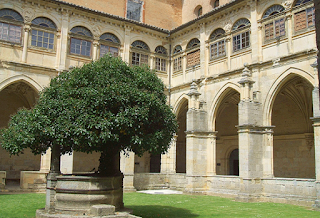The Camino de Santiago in the Middle Ages
The Camino Way de Santiago has always been a way to show the culture and
traditions of the different regions and countries throughout Europe.
During the Middle Ages, it established the major route of cultural
connection between the Iberian Peninsula and the European continent. It
is a sacred place next in line to Jerusalem and Rome for every Christian
to visit at least once in their lifetime. It is estimated that an
average of 200,000 to 500,000 pilgrims traveled to Santiago each year
during those centuries.
During their journey to Santiago, the pilgrims carried out a process by
which they assumed their sins by accepting them. By doing so, they will
amend and pay penitence; then they could be expiated by the Apostle as
soon as they arrived to the Cathedral in Santiago.
The first data on pilgrimage, dated around the X Century, affirms that
the people who made the Way did not do it alone, but in expeditions or
groups, since it was necessary for their mutual protection; and for that
reason, the Way was understood as a moment of solidarity and company.
Nowadays, it is difficult to reflect on the motives that began the
Jacobean pilgrimages and on the factors that helped their consolidation,
but the truth is that centuries have passed, human mentalities have
evolved, economic and social conditions have changed, but the Jacobean
route continues to be the same.


Comments
Post a Comment